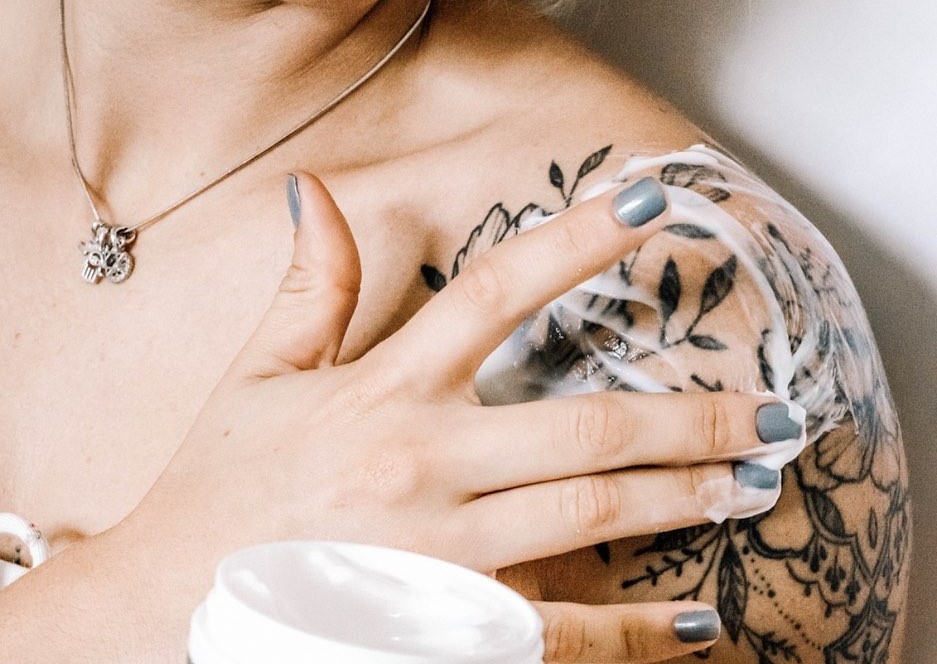Table of Contents
Lidocaine is our hero today – the Batman of the tattoo world, if you will. It’s the caped crusader that fights pain and gives you a smooth ride towards your coveted inked masterpiece. But what exactly is this superhero, and how does it work? This blog post will rip open the veil on lidocaine, the not-so-secret weapon of many tattoo enthusiasts, and me, your favorite ink maestro. We’ll be diving deep into the science of numbing and finding out just how this nifty little substance can change your tattooing experience. Not only that, but we’ll also take a look at its pros and cons because, while it does don a cape, it’s not always the perfect solution for everyone.
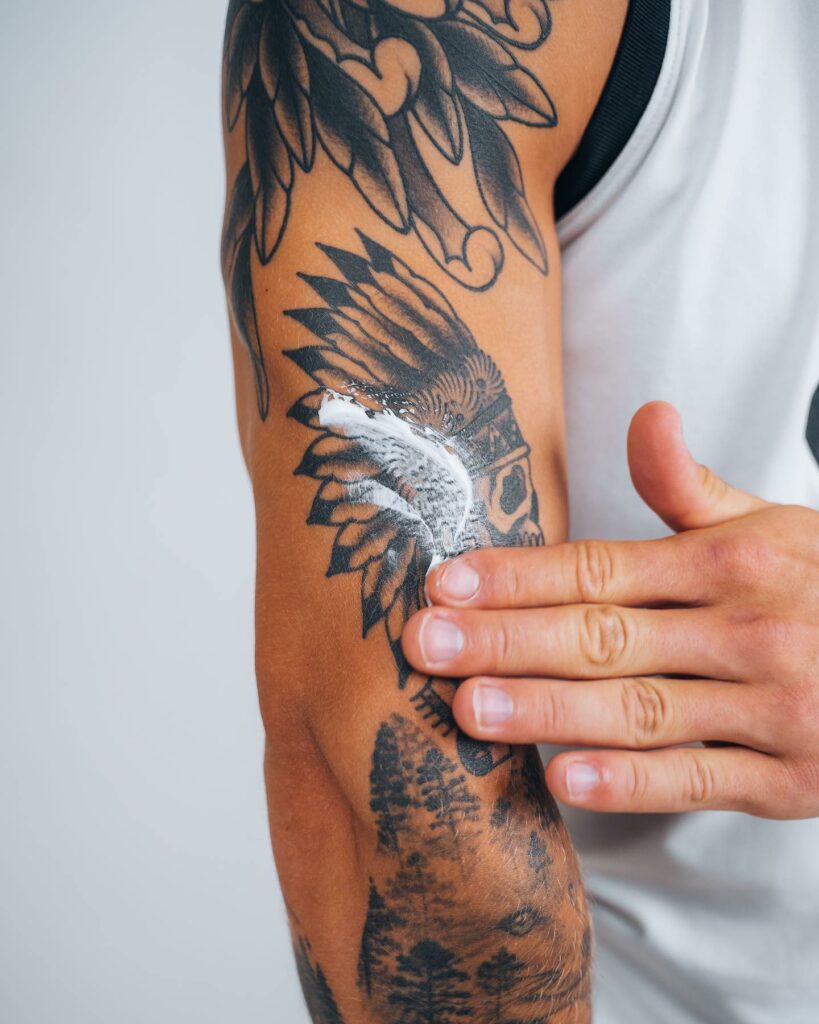
Prepping for Your Next Tattoo: An Insider’s Guide to Numbing
If you’re gearing up to add another vibrant piece to your personal gallery or maybe you’re taking the first leap into the world of ink, there’s one thing you’re surely considering – managing the ‘ouch’ factor. So let’s dive right into the mystical world of numbing creams, gels, and everything in between to help you cruise through your next session. But beware – not all numbing products are made equal. You need something that not only numbs but also nurtures your skin. After all, who wants a numbing failure mid-session?
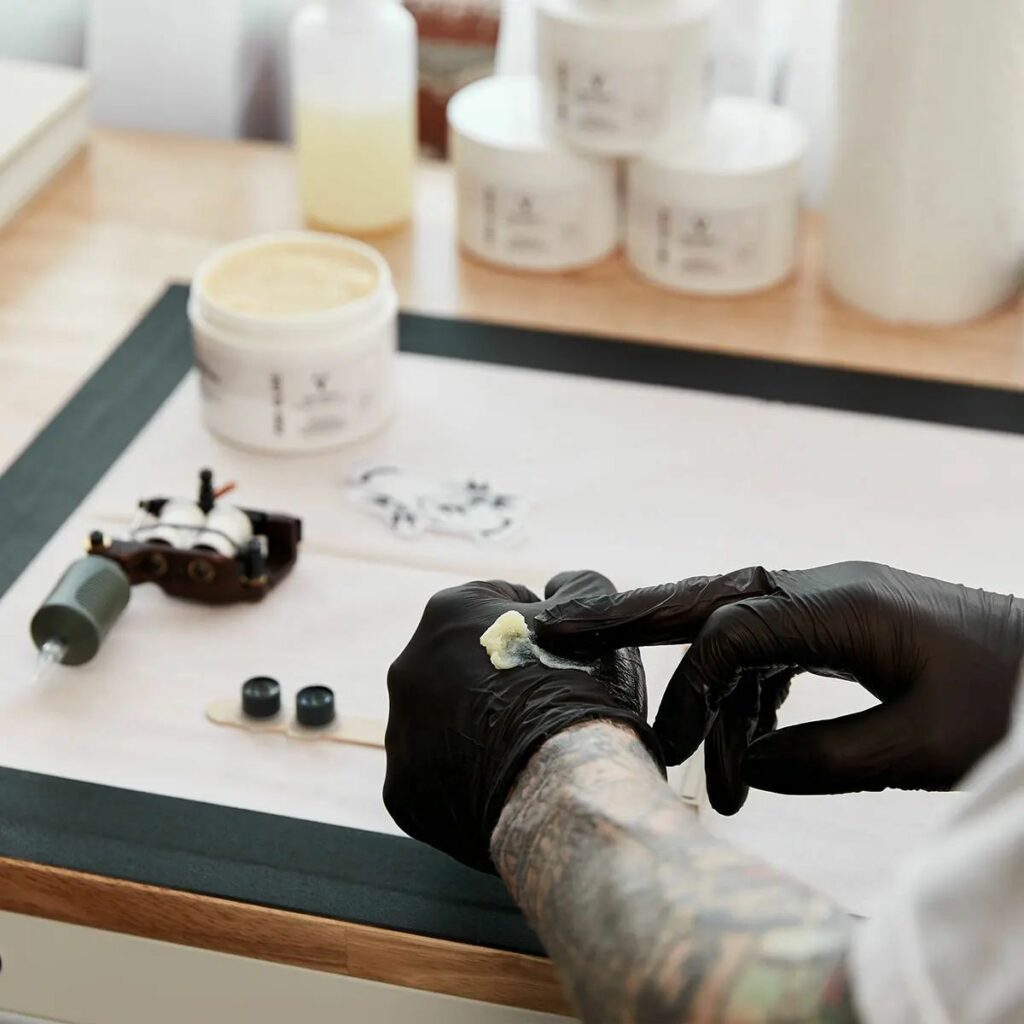
What Exactly Is Lidocaine?
As a seasoned tattoo artist, let me share a little secret – Lidocaine is a game-changer. Think of it as your BFF during the tattoo session, shielding you from pain by blocking nerve signals. While it doesn’t entirely numb your deeper skin tissues, it indeed makes the experience more bearable, even on sensitive spots. Remember that intimidating neck tattoo you always dreamed of but were too afraid to get? With lidocaine, it’s a lot less daunting. Products like HUSH incorporate lidocaine, offering you numbness throughout your session.
Types Of Lidocaine
Here’s some trivia for you – Lidocaine wears many hats. This FDA-approved, safe-to-use anesthetic not only eases your tattoo journey but is also used for various purposes. However, remember to be cautious if you have sensitive skin or common allergies. The effects of lidocaine can last anywhere from 30 minutes to five hours, depending on the form and dosage. Let’s delve into its various versions:

Lidocaine Gels
Lidocaine gels have a jelly-like consistency, with less oil, making them more effective on oily areas. Apart from tattoos, they are used for minor burns, insect bites, wounds, and dental procedures. Remember, they can be a bit goopy, so be cautious about the quantity and ensure it fully absorbs.
Lidocaine Creams
On the other hand, lidocaine creams are oil-rich and work best on drier skin. They are generally less runny than gels and can be used for minor burns, eczema, scrapes, and some medical procedures.
Lidocaine Sprays
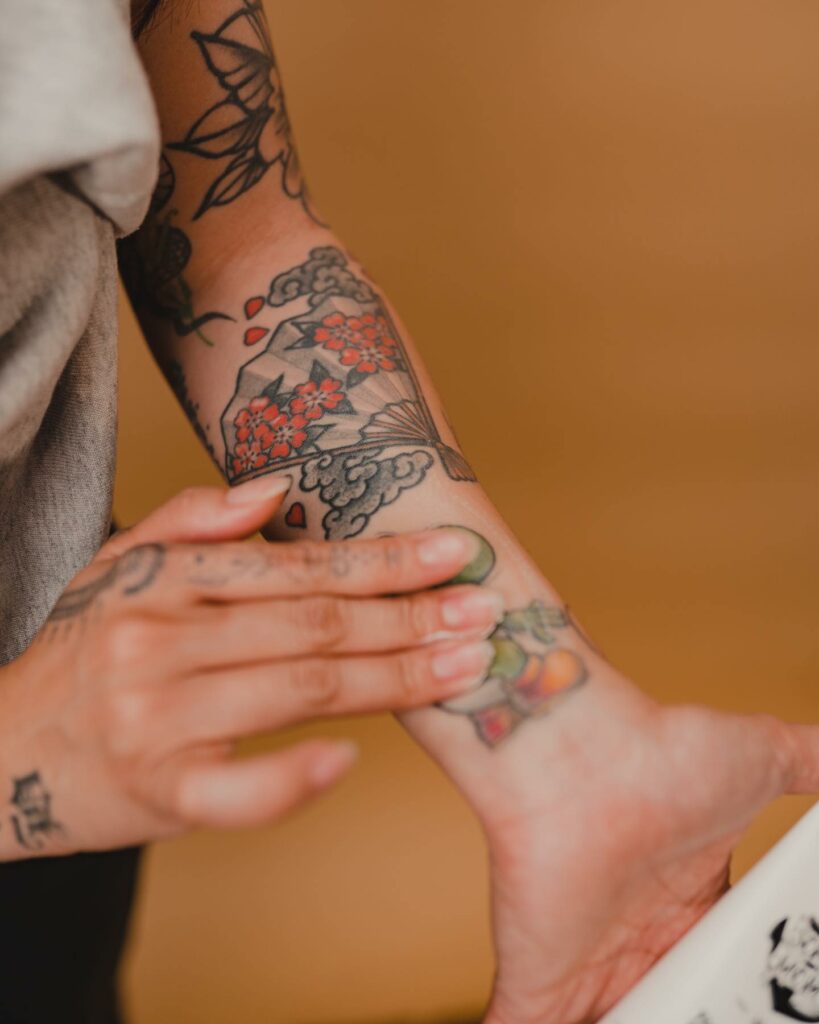
Then we have lidocaine sprays. Unlike creams or gels, these don’t need rubbing in and are often used for medical or dental procedures to reduce gum or throat sensitivity. HUSH’s healing spray, with 4% lidocaine, can be your go-to post-tattoo session.
Liquid Lidocaine
This viscous anesthetic medication can be injected into the skin or given intravenously and is typically found in doctors’ offices. It’s used for procedures, surgeries, and treatments and usually contains a much higher dose than the 2-5% found in over-the-counter products.
Lidocaine Patch
Finally, lidocaine patches release medication slowly and only work when applied. They are designed for use on healthy skin, so while they wouldn’t work for a healing tattoo, they’re excellent for muscle aches.
How To Use Lidocaine?
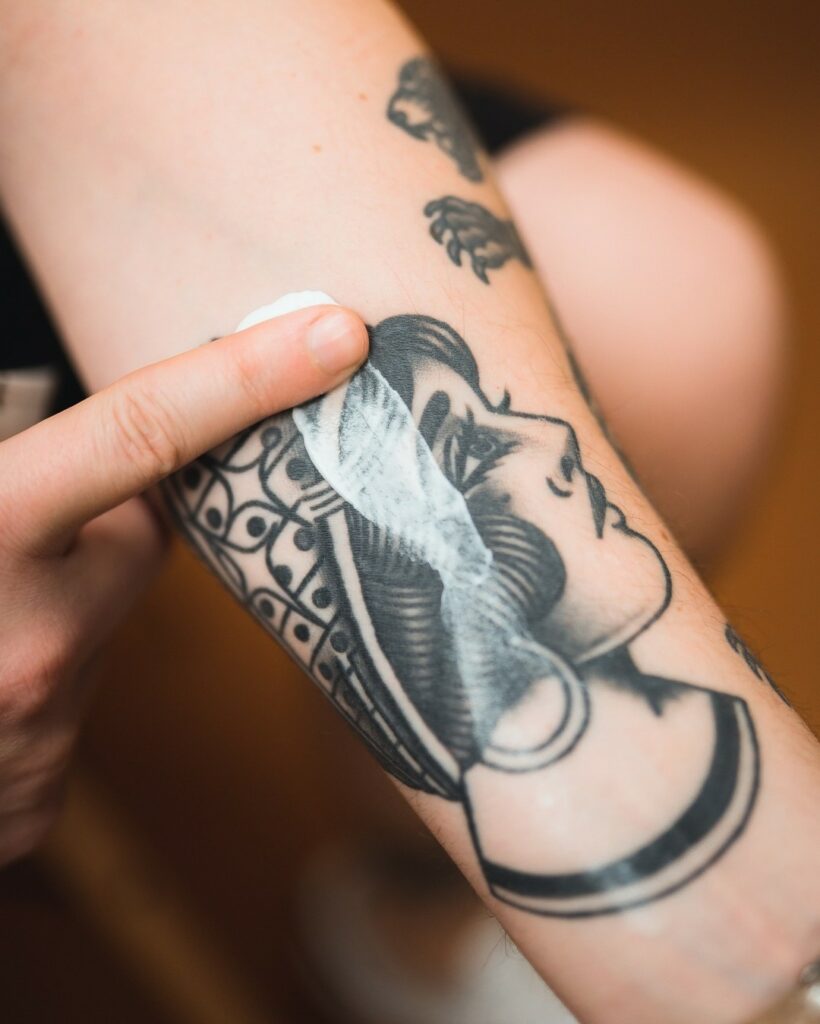
So, you now know what lidocaine is, but how is it used in the tattooing process? Mostly, you’ll find it in numbing gels or creams, but it’s also incorporated into products like HUSH’s Foam Soap and Healing Spray. The key is to ensure proper absorption into the skin.
Before Your Tattoo
Prep the area with a mild, fragrance-free, antibacterial soap, and warm water. Apply a thick layer of the numbing cream or gel onto the area to be tattooed. Cover it with plastic wrap and leave it on for an hour before your session for maximum absorption. Either your artist will do this for you, or you can do it yourself, given your artist is informed and okay with it.
After Your Tattoo
After the tattoo session, once the numbing cream or gel wears off, you might want something to alleviate discomfort. HUSH’s Healing Spray comes in handy here. Its lidocaine content helps with the sting while its natural ingredients, like aloe, chamomile, and comfrey extract, aid in healing.

What Are The Potential Side Effects Of Using Lidocaine
Lidocaine is generally safe for most people, but like any substance, it has the potential to cause side effects, especially if used incorrectly. Here are some potential side effects to keep in mind:
- Allergic Reactions: Some people may be allergic to lidocaine or other ingredients in the numbing cream. Signs of an allergic reaction include rashes, hives, itching, redness, or swelling. In rare cases, it can cause a severe allergic reaction, leading to difficulty breathing or dizziness.
- Skin Irritation: Lidocaine can occasionally cause skin irritation, including redness, swelling, and itching at the application site.
- Numbness beyond the desired area: If too much lidocaine is used, or if it’s left on the skin for too long, it can numb areas beyond where it was applied.
- Uneven or Altered Tattoo Results: In some cases, lidocaine creams or gels can cause the skin to swell or distort, which might impact the tattooing process and final results.
- Systemic Side Effects: Although rare, especially with topical applications, too much lidocaine can get into your bloodstream and lead to side effects like dizziness, irregular heartbeats, or seizures. These side effects are more common with injectable or high-dose lidocaine.
Always use lidocaine as directed, and stop using it if you notice any adverse reactions. If you are breastfeeding, pregnant, have liver disease, heart issues, or other health conditions, talk to your doctor before using lidocaine. And remember, while lidocaine can make the tattooing process more comfortable, it doesn’t completely eliminate pain or discomfort, especially for tattoos in sensitive areas or large tattoo pieces.
6 Great Products To Try In 2023
- Aspercreme Maximum Strength Pain Relief Cream: This is the best budget pick. It’s not specifically designed for tattoos but works well as a numbing cream.
- Hustle Butter Deluxe: This premium pick is beloved by many in the tattoo community for its natural ingredients and moisturizing properties.
- Icy Hot Max Strength Pain Relief Cream: This is the best for pain relief, providing a numbing effect to alleviate discomfort during the tattooing process.
- Platinum Rose Tattoo Butter: This is a great option if you’re looking for a product made with natural ingredients.
- Tattoo Goo Original After Care Salve: This salve is packed with natural herbs and is a great option for aftercare.
- Viking Revolution Tattoo Care Balm: This balm is a great overall pick due to its natural ingredients and affordability. It’s suitable for all stages of the tattoo process, including before, during, and after getting the tattoo.
When choosing a product, it’s important to consider your own needs and preferences. If you have sensitive skin or known allergies, the safest option is a cream with natural, organic ingredients.
Conclusion
So, there we have it, folks! The low-down on lidocaine, the numbing super-agent in your tattoo journey. Remember, it’s all about finding the right product that numbs, nurtures, and lets your skin shine. Be it gel, cream, or spray, choosing the right avatar of lidocaine is crucial based on your skin type and tattoo location. Do bear in mind the potential risks – sensitivity, allergies, or certain health conditions that may warrant caution. Always consult with your artist or a medical professional if you’re unsure. But don’t let these risks dampen your spirit. With a bit of preparation, and a generous dose of lidocaine, you’re all set to brave even the most intimidating of tattoos. So go ahead, embrace the world of ink with a newfound confidence. Your masterpiece awaits you!
